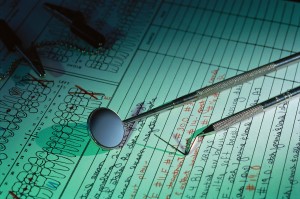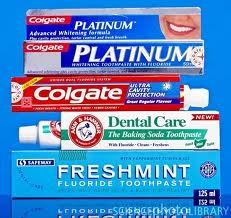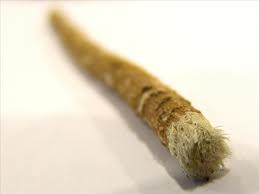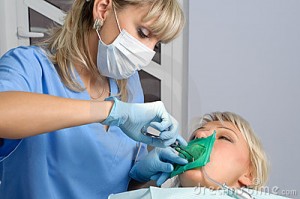A tooth that is partially erupted or unerupted, beyond the date of eruption is defined as an impacted tooth. Any unerupted tooth can be termed as impacted only when root formation is complete and yet retained in an unerupted position.
Monthly Archives: October 2011
Basic Dental Instruments
Whenever you visit a dentist, you tend to notice the many different dental tools that are laid down beside the chair. A dental professional uses a variety of dental equipment for examining, cleaning, cutting and restoring teeth. Not many are familiar with these instruments therefore here is a quick guide on the basic dental instruments available in a dental office and their usage. Continue reading
History of toothpastes
There are many brands of toothpaste in the market available today, such as Colgate, Darlie, Fresh and white, Aquafresh, Sensodyne etc, all with different ingredients serving different purposes such as teeth whitening and fighting tooth sensitivity; but their main function is to fight decay. So how did the toothpaste first come about?
Continue reading
Success Rate and Outcomes of Root Canal Therapy
 Every stakeholder in dental delivery system has different definitions and expectations regarding the outcome and result of root canal treatment. As a patient, you might be concerned about the function and esthetic of the endodontically treated tooth where as your dentist will judge the outcome of a root canal treatment based on the results of clinical and radiographic examinations. Continue reading
Every stakeholder in dental delivery system has different definitions and expectations regarding the outcome and result of root canal treatment. As a patient, you might be concerned about the function and esthetic of the endodontically treated tooth where as your dentist will judge the outcome of a root canal treatment based on the results of clinical and radiographic examinations. Continue reading
How to Recover a Swallowed Dental Crown
Dental crowns are not only necessary for a beautiful smile, if they are on a back tooth they provide a surface with which to chew food. Dental crowns are expensive. There are two types of crowns, temporary and permanent. Dental patients more often tend to swallow a temporary crown, since the adhesive used to hold it in place is more likely to fail and the crown may be dislodged while chewing a mouthful of food and swallowed before you know it’s missing. Less frequently, this happens with permanent crowns but when it does, you can recover the crown and have it reattached. Dental crowns or restorations may be inhaled or swallowed by the patient during chewing food, sleeping, laughing or yawning or may be during some accident. Patient should be told not to get panic and stay calm if he/she has swallowed a dental crown. Continue reading
What is Endodontics?
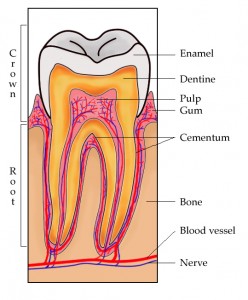 What is Endodontics?
What is Endodontics?
Endodontics is the diagnosis and treatment of inflamed and damaged pulps. Teeth are made up of protective hard covering (enamel, dentin and cementum) encasing a soft tissue living tissue called pulp.
Pulp c0ntains blood vessels, nerves, fibers and connective tissue. The pulp extends from the crown of the tooth to the tip of the roots where it connects to the tissues surrounding the root. The pulp is important during a tooth’s growth and developement. However, once a tooth is fully mature it can survive without the pulp, because the tooth continues to be nourished by the tissues surrounding it.
How to Help Children Overcome Debilitating Fears of the Dentist?
 Overview
Overview
It is practically normal for a child to fear dentist. The parents and dentists play an important role to cultivate good impression and behavior towards dentist. Continue reading
Ancient Toothbrushes
The very first toothbrush was introduced around 3500BC. These toothbrushes are in the form of “chewing sticksâ€. These sticks are taken from trees such as Garcinia kola and Govania lupiloides.The ends of a stick are chewed on until the fibres of the wood have frayed and take the form of a brush, which can then be used to clean teeth. This type of toothbrush was used by the Egyptians and Babylonians, and was probably the ancestors of the Miswak toothbrushes which are used the same way as chewing sticks. The difference is that they are made from the branches of the Salvadora persica tree, which have healing and antiseptic qualities. Miswak is still used today and even considered to be superior to modern tooth brushes by some. It is especially popular amongst Muslim communities.
How to Recycle Partial Dentures
It’s time to replace your partial dentures. But what do you do with your old ones? It seems a shame to just throw them away. After all, they were expensive, and there are so many people who can’t afford dentures but need them. Did you know that there are over 3,600,000 sets of dentures produced around the world every year? And did you know that each set contains around roughly US$25 of precious metals? Unfortunately, because of the personalized nature of dentures, they are usually not recycled in such a way that they are given to another person to wear. There are some things, however, that you can do with your partial dentures other than just tossing them in the nearest trash bin. Continue reading
What is a rubber dam?
Rubber dam, which is usually made up of latex rubber, is one of the most effective means of isolating teeth. Isolating teeth means preventing any saliva or debris from reaching the teeth during any dental procedures. It was developed by Barnum in 1864. Continue reading
